Note
I love reading your takes 💗 hope you keep posting
Heyy thank you so much!!! Had no idea you'd take the time out to text me, thank you!!! :D
0 notes
Text
Politics,Police and Prime-time: On Paatal Lok
Tumblr pe likha hai, lekin padha maine Whatsapp pe.
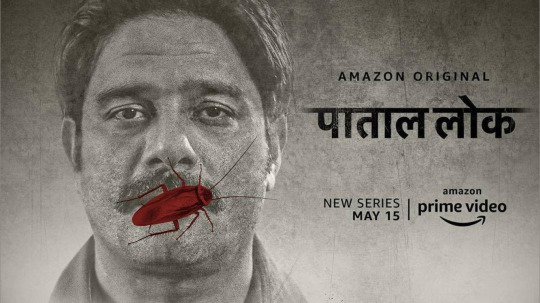
Television in India has recently witnessed a surge in thrillers. Sacred Games, Mirzapur and The Family Man sent shock-waves across the entertainment industry. The latest that can be added to the list is Paatal Lok, starring Jaideep Ahlawat (Alia Bhat’s trainer from Raazi), Neeraj Kabi (the corrupt cop from Sacred Games and the ultimate villain in Detective Byomkesh Bakshi!), Abhishek Banerjee (our very own Compounder from Mirzapur) and Ishwak Singh starring in lead roles.
The stage for Paatal Lok can be best described as Indian society today, and when I say today, I mean literally today. Communalism, casteism, sensationalism, nationalism, the ill-treatment of transgenders, fake news and vote-bank politics are just few of the themes ingrained in Indian society today that are covered in the show.
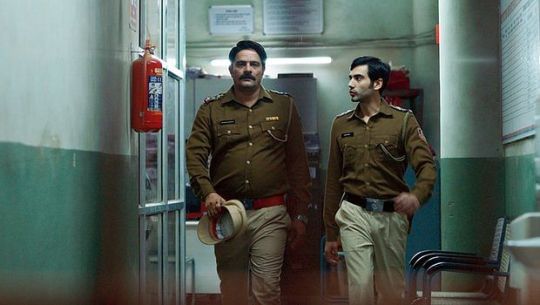
The plot is confusing, to say the least. A failed assassination attempt on a prime-time news-anchor Sanjeev Mehra (Kabi), who is depicted in the show as a milder version of Arnab Goswami, sets in motion a series of events that eventually make us realize that politics and society isn’t as chaotic as we might perceive it to be. It is indeed a ‘well-oiled machinery’. Inspector Hathi Ram Choudhary (Ahlawat) and constable Imran Ansari (Ishwak) are assigned the investigation by the CBI itself, as they start grilling the four ‘hit-men’ who failed to finish the job.
This article is a brief overview of all the themes that are involved in the show. I’ll start with the elephant in the room - TV journalism, or as Newslaundry puts it, TV Newsance!
Sensationalism

You can be reminded of only one man (let’s refer to him using a random alphabet, like A) when you see the above picture of Sanjeev Mehra, especially after that man was attacked by the Indian branch of the ‘Italian Mafia’. Although the assassination attempt failed, Mehra did not fail to take this opportunity and gloat about it about on his prime-time show. With his job on the line, Mehra’s words are identical to A’s, as his show’s ratings explode overnight. The resemblance is uncanny. Whether Sanjeev mattered at all to the master-plan is for you to watch and know, but to quote a character who is talking to Sanjeev, you don’t look too happy knowing that you are safe now.
Nationalism
Allow me to first present the difference between patriotism, nationalism and jingoism. Patriotism is love for the motherland, nationalism is the insistence of one nation’s superiority over others, and jingoism is nationalism in the form of aggressive foreign policy. The ‘nationalist’ theme of the show is evident when the CBI (the mistress of the central government) links the assassination attempt of Mehra straight to Pakistan and the ISI. That makes Pakistan look like the usual villain, and the CBI, along with the Delhi Police and the Central Government look like usual heroes. As you might have guessed, the ISI link was bullshit, but the idea to include it in the plot was an awesome one, since it provides us with an accurate representation of politics and governance in Indian society today.
Religion and Caste
No Indian TV show that involved politics and police-work could be remotely realistic without the inclusion of communalism and casteism.
Constable Ansari is often the target soft Islamophobia. As he prepares to top the IPS exam, the CBI director is seen remarking, so many people from his community are joining the force these days, these will boost their image also. Yeah, because Indian Muslims, as proven time and time again by the Indian media, have to consistently prove their loyalty to the motherland. Being born on Indian soil was never enough, now it has become a crime, a crime in which they are guilty until proven innocent.
A throwback to the early life of Tope Singh (Jagjeet Sandhu), one of the four in the assassination team, reminds us of the ugly truth about caste and its active role in Indian villages today.

Tope, a low-caste ‘Manjaar’, whose scarred childhood made him the man he is today, runs away to the city after retaliating against an attack on him by his fellow upper-caste villagers, the punishment of which is borne by his family members.
There are other instances of casteist and communal slurs as Inspector Hathi Ram’s investigation takes him to Chitrakoot, which brings me to the final theme of the show.
The Eminence of Bahubalis
Two of the most intriguing characters in the show are Vikas ‘hathoda’ Tyagi (Banerjee) and a man named Donnulia, the Bahubali of Bundelkhand.
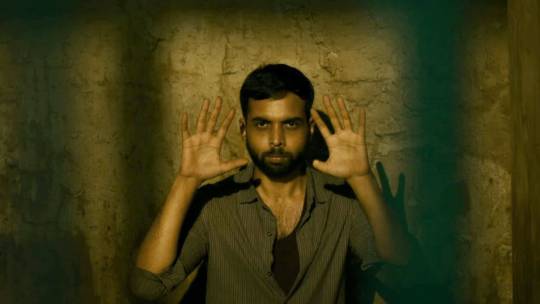
I’ll start with Donnulia, a man whose face is never shown. One could say that the inspiration behind this character is Mohammad Shahabuddin, the don who held Bihar in the palm of his hand for years. Donnulia happens to be involved in the plot due to his close connections with a politician, who is suspected to have ordered the hit on Sanjeev Mehra, thinking that it would boost his re-election chances. Where does Tyagi fit in then?
Well, ‘hathoda’ is Donnulia’s most lethal weapon. A grim throwback to his school-days show us what turned him into the cold-blooded assassin he is today, with forty-five murder charges against him. But a killer as lethal as him, fails to kill an ordinary journalist? Seems a bit weird right?
WATCH THE SHOW. Thank me later.
P.S. The dogs might be the most deciding factor of the show.
27 notes
·
View notes
Text
On Morally Corrupt Institutions
Everyday some gut-wrenching video comes out, nothing new. But today I felt things, so I had to vomit it out here. Five paragraphs only.
Being an Indian in 2020, a question comes to my mind: which is the most morally corrupt institution in the country? The two answers which I was initially conflicted about were the media and the police.
Today I made up mind, it's the police. Unlike the media, the police, due to their uniform, owe allegiance to the people. There is no such allegiance in India. Those who'll give one-off instances of good police work can go fuck themselves. The truth is that the cops today, only serve the rich. This is not a claim made out of thin air. I kept my mouth shut for two months to observe how the cops behave during the pandemic.
Look at the number of birthday cakes they delivered, and then look at the socio-economic conditions of the families. Then, when you're done drooling over their 'heroic' actions, look at the number of people they've brutalized during the lock-down. Then look their socio-economic condition. Also look at what those people were doing to deserve slaps, kicks and lathis. They're mostly either walking back home, or going out to buy milk or biscuits for their kids because no parent would let their child sleep hungry.
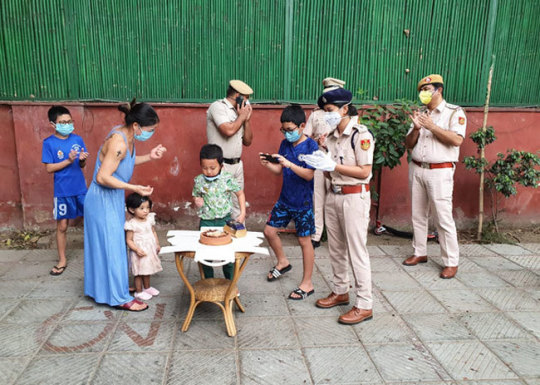
If you noticed the difference that I'm talking about, but you fail to acknowledge it out of some misplaced sense of jingoism, (because you HAVE TO call them 'Corona Warriors', otherwise what will become of your fake patriotism), then you're cruel, insensitive, greedy, and pathetic. If you fail to notice the difference, you're obviously very stupid, that is, you're a bhakt.
The point is that being either of the two won't do you any harm. You'll be fine, living your comfortable life. But what you'll result in doing is making the police, and the government, immune to criticism, and you know what that means? That means the police and the government will keep on doing whatever the fuck it wants with no regard for the underprivileged and the powerless. So when India dies a slow death (and the slow death has begun), don't think that your hands are clean.
P.S. I won't even start about the riots.
2 notes
·
View notes
Text
On right-wing assholes and the character assassination of Safoora Zargar
Safoora's three crimes: born a woman, born a Muslim, and taking a stand against the fascist regime. This braveheart, who relentlessly protested against the citizenship legislations is languishing in jail, with a baby on the way. What more did the sanghi bastards need?

A group of 3 million members called 'We Support Narendra Modi' spread online a morphed pornographic video of her. Don't be surprised, our PM's ordinary supporters are the most misogynistic, casteist, racist and vile creatures of the country. IT Cell has dedicated itself to tweeting theories of how she's a prostitute of Shaheen Bagh. I don't need to remind you of how sick the Indian Right is.
The point is merely this: you can support the moronic government, that just makes you stupid. But if you don't call out this bullshit, YOU are equally responsible for the pathetic state of women in Indian society. Don't just cry when boislockerroom happens, do what you can to ensure that it doesn't!
One last thing, right-wing men (and some women) are assholes.
165 notes
·
View notes
Text
Threats to International Security [2/4]: Nuclear Weapons
In which context can nuclear weapons be a threat to international security? Of course, one should never forget about “Little Boy” and “Fat Man” but the fact is that those two were and remain the only use of nuclear weapons in armed conflict. While the threat of nuclear bombardment has been invoked quite a few times in the last seven decades (especially during the cold war), it has never actually happened. Why is that so?
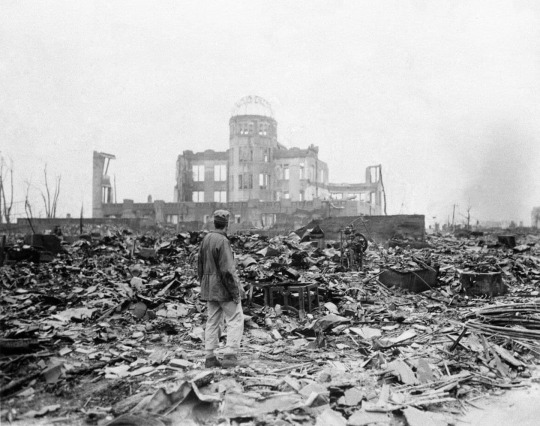
Before I proceed to my argument, two caveats.
The question about nuclear weapons being a threat to international security is not about their usage, it’s about the likelihood of war between nations possessing nuclear capability, because they possess nuclear capability. If it was just about direct usage, then the answer is simple: nuclear weapons haven’t been used after 1945, so they do not pose a threat at all. But if only international relations was that straightforward!
While I do believe nuclear weapons can be successfully used to maintain domestic security, the circumstances which accommodate such a situation are highly undemocratic ones, and therefore, not worthy of my support. For example, during the Libyan Civil War of 2011, when Gaddafi was on the verge of defeat at the hands of the rebels, he is believed to have said that the former North Korean dictator, Kim Jong-il, who took a tough stance on maintaining nuclear capability for security purposes, must have been “looking at him and laughing” (Ying 2017, p 18). Therefore, while I argue that nuclear weapons promote international peace, I am absolutely against the idea of maintaining nuclear capability and threatening its use in order to suppress domestic dissent, and in that process, protect personal power.
Two very closely related questions need to be answered:
How often did nuclear weapons bring nations to the brink of war?
Did war actually break out?
I shall attempt to answer both these questions later on. But first let’s begin with the question of why? Why would states want nuclear capability? What kind of states are these? Only two types of states acquire the bomb: powerful but highly threatened states; and weaker states whose territory is protected by an ally they deem unlikely to remain present in the long-term or unwilling to ensure its other core security goals. This argument makes a lot of sense when it comes to cases like Soviet Union (cold war against the United States), India (threatened by China), Pakistan (threatened by India), Israel (surrounded by Arab states) and North Korea (threatened by the USA and South Korea). It also provides a good explanation as to why countries like West Germany or Iraq remained non-nuclear. Without a doubt, nuclear capability would enable an otherwise weak nation to stand up to more powerful adversaries. But does this newfound power become self-defeating and lead to conflict? That is the core question of nuclear proliferation.
Let’s begin conceptually. Do nuclear weapons increase the chances of war? Waltz argues that it depends on whether NWs encourage the deployment of forces, and if deployed, how active the use of force may be (Waltz 2003, p 6). The primary idea is that if NWs encourage offense, then they are bad. But if they make defense and deterrence easier, then they are good. But he is, after all, a nuclear optimist and I support his argument that nuclear weapons make deterrence easier, and lead to a lack-of-war scenario.
The so-called “nuclear peace” results when the costs of war are unacceptable for all the parties involved. For example, if both sides have mutual second-strike capability in a two-way conflict, defense becomes impossible, which makes deterrence very possible. Additionally, in a condition of mutually assured destruction, there exists the issue of civilian “hostages”. This element encourages cooperation because the possibility of a nuclear strike wiping out a country’s population defeats the purpose of war in the first place.
Case Study: India-Pakistan stand-off: 2001-2002
To illustrate my point using a very small case study; on December 13th, 2001, five armed gunmen attempted to penetrate the Indian Parliament in a coordinated terrorist attack. They were unsuccessful as all five of them along with six Delhi Police personnel, two Parliament Security Service personnel and a gardener, died in the gunfight that ensued. Based on telephone intercepts, the IB (Intelligence Bureau) and RAW (Research and Analysis Wing) claimed that the attackers were members of two Pakistani based terrorist organizations: Lashkar-e-Taiba and Jaish-e-Mohammed.

The terrorist attack increased tensions between India and Pakistan, resulting in the 2001–02 India–Pakistan standoff, which resulted in the massing of troops on either side of the border and along the Line of Control (LoC) in the region of Kashmir. But here’s the interesting part: the “standoff” did not escalate into a war, and the crisis ended in around six months. While a detailed explanation of why India showed restraint and why India and Pakistan did not go to war is beyond the scope of this blog series. I only want to argue that the awareness on both sides of each side’s nuclear capability induced mutual caution, especially when this very capability enables either country to assemble nuclear weapons at short notice. This caution was never evident on India’s part before Pakistan acquired overt nuclear capability in 1998. As K. Subrahmanyam, an Indian defense analyst pointed out, “In 1965, when Pakistan carried out its “Operation Gibraltar” and sent in infiltrators, India sent its army across the cease-fire line to destroy the assembly points of the infiltrators. That escalated into a full-scale war.”
The Stability-Instability Paradox
It can’t be denied that Pakistan’s desire to rock the boat has increased with its acquisition of a nuclear arsenal. So nuclear weapons do indeed bring nations closer to war. So the paradox does hold in this case. But the larger point is that war did not break out because nuclear weapons acted as a deterrent. Small-scale conflicts and minor skirmishes may break out due to newfound boldness of nuclear states, but it shall never escalate into a nuclear level. But the paradox is a valid criticism of my argument if one considers regular minor skirmishes to be a threat to international security.
What of the pessimists?
Scott Sagan, a “proliferation pessimists” argue that “more will be worse” because more nuclear weapons in the hands of more states increase the chance of preventive wars, crisis instability, and an accidental nuclear detonation. Paul S. Kapur, another pessimist, argues that due to the possession of the nuclear arsenal, leaders may weigh their strategic options in such a way that makes it appear that risky behavior serves their political interests, and such a perception can lead to irreversible escalation. While all these arguments certainly cannot be ignored, the nuclear optimism argument wins simply on the grounds of real events. Pessimists claim that a lot can happen due to nuclear capability, optimists respond by saying none of that has ever happened, because of nuclear capability. The Cuban Missile Crisis is a classic example too, but I can’t get into that right now.
Therefore, nuclear proliferation does not pose a threat to international security, in fact, it has led to a world where nations think twice before escalating conflict.
1 note
·
View note
Text
Threats to International Security [1/4]
The status of international security today is unique. After the end of the Cold War, the United States of America dominated the international order with its military might, economic stature and cultural influence. However, as we begin the year 2020, we see the United States in gradual decline, the Russian Federation gradually retrieving its lost influence, and of course, a new player in global power politics: the People’s Republic of China. We are also looking at a new kind of great power politics, the battle for regional hegemony in the Middle East between countries like Iran, Saudi Arabia, Turkey and Israel. Today, eight nations are part of the nuclear weapons club, nine if we count Israel, whose nuclear policy is one of deliberate ambiguity. Have nuclear weapons contributed to strategic stability and reduced the risks of large-scale wars? Or have they led to the exact opposite effect? Lastly, despite the weakening of the Islamic State, the threat of terrorism is far from extinguished. Terrorism is spreading, especially to regions of Africa,often neglected by the western media. It is spreading despite the fact that it has been proved to be unsuccessful in attaining maximalist objectives and rarely successful in attaining limited ones. The threat is very much there. This blog series argues that among the three aforementioned threats to international security, it is indeed great power competition that poses an unmatched threat. My main argument gets its basis from the perils of proxy wars, a concept discussed in this blog series. I make two further claims. Firstly, nuclear weapons contribute to strategic stability and peace between nations possessing nuclear capability. Therefore, it is not much of a threat to international security (the only threat, as I shall explain, is instability at the sub-strategic level). Secondly, while terrorism is a significant threat to international security, several reasons make it less threatening with respect to great power competition.
-----------------------------------------------------------------------------------------------------------
“One bomb alone destroyed a large city, in one moment.”
“After we were captured, we were forced to watch them beheading some of our Yazidi men.”
“It was like we were between two deaths, the chemical attack on the lower floors and the drone strikes hitting the upper ones.”
Nuclear weapons, terrorism and great power competition (GPC) have caused unimaginable destruction in the past. Statistics only tell us half the story, but even that half is horrifying. In this series I attempt to answer which one of these three threats to international security clearly outweighs the other two. I start off by arguing that nuclear proliferation encourages world peace, especially if we define peace as the absence of war. Then I shall move on to terrorism and argue that, while it is poses significant dangers to international security, this threat does not trump the threat of GPC. Finally, I argue that GPC’s threat to world peace and stability is unmatched, and use one of the favorite tools of Great Powers - proxy wars - to substantiate my argument. My conclusion shall provide four arguments (all mine, not paraphrasing any author, any resemblance is purely coincidental) as to why GPC is a greater threat to international security and peace than terrorism.
2 notes
·
View notes
Text
On The Death Penalty

20/03/2020. Four out of the five (six, we don’t know whether Ram Singh killed himself or was killed) convicts of the infamous Nirbhaya rape case were finally given the noose. However, if we take a closer look, we’d notice that they didn’t die in 2020. Their fate was sealed seven years ago when the public, the politicians and the media displayed an insatiable thirst for their blood, hence proving the regressive nature of the world’s largest democracy.
Unlike the hanging of Yakub Memon or Afzal Guru, the hanging did not spark widespread outrage. Of course, one could propose multiple reasons for the same. Activists were already immersed in a movement against laws that were aimed at systemically exterminating the Indian Muslim population. Many of my liberal lads ideologically against capital punishment didn’t raise their voices either, claiming that the heinousness of the crime was “too much” for their conscience to stick to the liberal side of the death penalty debate. “Imagine what the mother went through”, they stated.
I cannot speak for the mother, or for anyone in the family, or for any of the victim’s friends and acquaintances. It is more than justified for them to demand justice in the form of the death. But I can speak for liberals, for those who have some shred of objectivity left (Tablighi Jamaat showed that many don’t).
We hear a lot of scattered arguments from today’s conservatives on why the noose, or the needle, or the electric chair is not only justified, but also necessary. I want to tidy up their poorly phrased arguments in a manner that can be constructively used to articulate my own arguments. The two arguments most stressed upon by the proponents are that the death penalty is “just”, and that it ensures “the greater good of society”, by deterring potential criminals (utilitarianism or consequentialism in philosophical jargon). I’ll start by talking about what they call justice, which I call vengeance. On this note, please welcome, our dear old friend, the one and only Immanuel Kant.
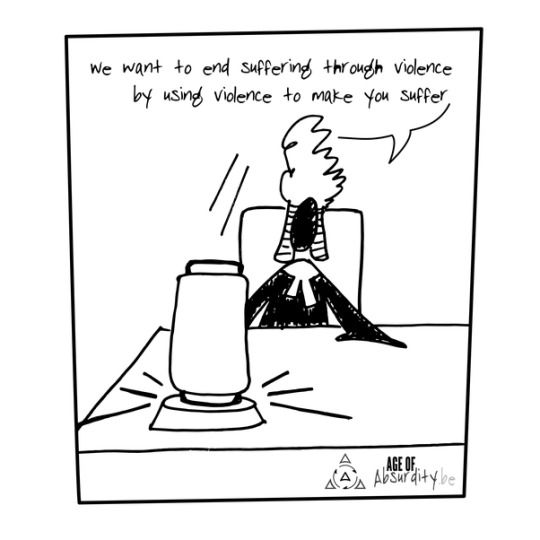
Kant’s argument on the death penalty, unlike his three Critiques and the Metaphysics of Morals, is pretty straightforward. He believes in strict equality (lex talionis in Latin jargon) in the magnitude of the crime and the magnitude of the punishment. Of course, it begs questions like, should a serial killer who murdered twenty-three people be injected twenty-three times and resuscitated after each injection, or should a terrorist be blown up to pieces as an “equal” punishment? What about a failed bombing attempt? How is the doctrine of strict equality going to punish liars and cheaters?
The argument of strict equality, basically, is not strict at all (understandably). The conservative interpretation of lex talionis can be stated as follows: Any crime which involves taking a life, or permanently damaging the soul of a human being, or a crime which shakes the moral fabric of society, should be met by a punishment proportional to that crime, and that punishment can only be proportional if it is death. When the liberal asks why, the conservative replies that no human has the right to take a life. The obvious (and weak) liberal response is inquiring about the criminal’s right to life, to which the conservative will paraphrase classic liberals like Kant and Mill, who argued that any human who violates another human’s right to life relinquishes his own. They can also argue that while a human can’t take another human’s life (even a criminal’s), a state, or a Leviathan can, because one of the main purposes of the Leviathan is justice.
So it boils down to me proving that the death penalty is not just.
Let’s begin.
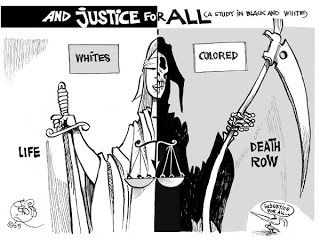
There are two types of cases to make against the death penalty - that it is unjust in principle, or it just in principle but unjust in practice. The first set of arguments claim that it is morally wrong to take a criminal’s life, while the second set claims that while such actions can be morally condoned, the application of such a system of justice is unjust as it systematically targets certain groups of people, while completely ignoring certain other groups. I myself am a proponent of the first one. Defending the latter is relatively easier due to conclusive evidence, so I shall begin with the first one.
French sociologist Émile Durkheim, in his Two Laws of Penal Evolution argued that softening the standards of physical punishment is a sign of “progressive” societies. Such an argument should not surprise us at all since common sense has dictated most of us to call Saudi Arabia a “regressive” society due its refusal to abolish old-age methods of punishment like stoning, lashing and beheading. On the other hand, most first-world nations today, with the notable exception of the United States of America, have abolished the death penalty. India and China are not first-world yet, unlikely that India will ever be. Anyway, the idea that capital punishment does not belong to a progressive society is based on the liberal notion that the death penalty itself is not progressive at all, because it is immoral.
Some of you might have watched Batman Begins. In his League of Shadows training, Ra’s Al Ghul asks Bruce to execute a murderer with a swipe of his sword. Bruce refuses, to which Ghul replies that his compassion is a trait that his enemies will not share. Bruce’s response might just be the greatest quote of the Dark Knight Trilogy, “that’s why it’s so important, it distinguishes us from them.”

The point is that the death penalty brings us down to the moral level of the criminals. This is directly linked to Kant’s eye for an eye argument. If we take an eye for an eye, we respond to barbarity with barbarity. Hence, in our quest for “justice”, we become barbarians too, and justice loses its meaning and is replaced by revenge. Killing is responded to by killing, making everyone a murderer, and hence, immoral.
The counter-argument is often the utilitarian/consequentialist one, that is, capital punishment would deter future crimes by instilling fear into would-be criminals, and therefore, even an immoral act like the death penalty has a morally acceptable outcome, that is, a safer society. But the utilitarians are rather funny in this debate, they’d be willing to hang an innocent man too if they had evidence that that particular miscarriage of justice would lead to a positive outcome in society (like fewer crimes), which is why it does not stand any chance against any deontological argument about the death penalty.
But the most basic flaw in the utilitarian argument is the belief that the death penalty deters, it does not. Not only do statistics contradict the utilitarian claim, but with respect to India, think of the Ranga-Billa case. How many rapes have been prevented by sentencing Ranga and Billa to death? Proponents will say that even if the rape numbers did not go down post Ranga-Billa, numbers could have gone up, but the hanging did not allow rape numbers to spike. Such an argument is wishful thinking and mere speculation.
The right to life is an inalienable right, god-given for believers, and a natural right for atheists. The only two ways this right can be snatched away is via God or via nature. It cannot be taken away by fellow humans, even if some fellow humans have entered into a contractual agreement with each other to form a Leviathan. Not to forget, it is irreversible, and thus the chances of a travesty of justice become much higher. A man being wrongfully imprisoned for a few years is nothing in contrast to man wrongfully given the electric chair. Please read about the case of Timothy Evans, who was wrongfully hanged in Britain for the murder of his wife and child, after which the death penalty was eventually abolished all over Britain. The actual murders were committed by the infamous serial killer John Christie, but that’s a different conversation.
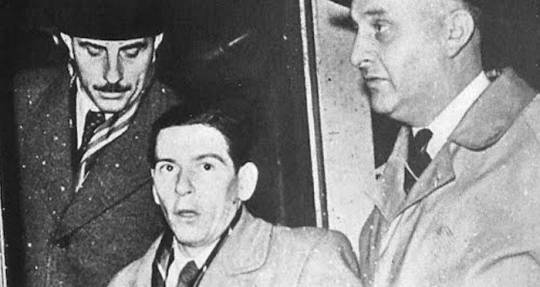
Some soft abolitionists argue that while the death penalty is morally just, its application in real life makes it an unjust practice. The simplest example to illustrate this in India’s case is Kuldeep Singh Sengar. This vile creature, along with his henchmen and relatives, raped a girl for over a month and murdered her father. Did he get the noose? He didn’t. Why? Powerful politician and an upper-caste Hindu? Most likely. That should illustrate the argument, that the death penalty is classist, casteist and racist. Forget intra-community violence, studies have shown that in the USA, blacks are much more likely to be executed for killing whites than whites who have killed blacks. This comes as a surprise to none, so why do the proponents keep their mouth shut about the explicitly discriminatory nature of the noose, the needle, and the chair?
Weak communities and minorities are easy targets. The truth is, the death penalty does not apply to white people, or the rich, or upper castes in India. Sajjan Kumar and Jagdish Tytler, notable Congress politicians who took part in the 1984 pogrom of the Sikhs, did not receive the noose. Kamal Nath was made Chief Minister. Babu Bajrangi and Maya Kodnani, convicted of committing unfathomable crimes in the 2002 pogrom against Muslims were sentenced to prison but are out on bail. The justice system is a joke. So do not put forward the case of the death penalty when its just application is unlikely in an unjust justice system.
There are many other nuanced sociological arguments against capital punishment (like if poor people are more prone to crimes and hence capital punishment, is the state equally responsible for the crimes committed) that I shall not get into, due to the increasing length of this blog. But I’d like to end on a Kantian note. Kant proposed three basic necessities in his support of capital punishment. Proponents shout out the first one, but ignore the other two. They support Kant when he says that the magnitude of the punishment should be equal to the magnitude of the crime. However, they look the other way when he says that only the guilty should be punished, and all the guilty should be punished. Think about whether the last two are fairly applicable in today’s society.
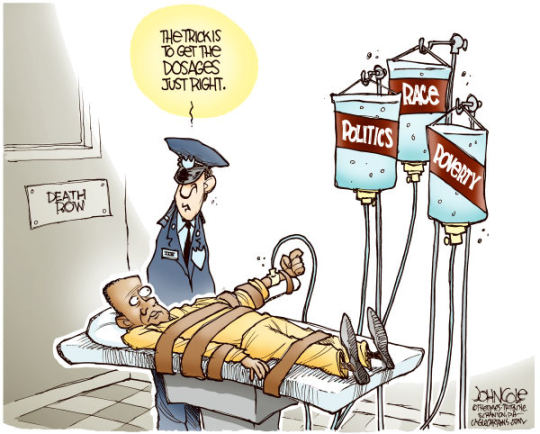
3 notes
·
View notes
Text
On the Nazification of India
It is almost complete.

I know this because anyone who resists the Supreme Leader's instructions risks death and destruction. Doctors, (the same ones we applauded in the "bang your thalis, not your spouses" initiative) are being asked to keep their mouth shut when they try to raise concerns about PPE and testing. The masses have become unquestioning towards authority. To quote my hero, Ambedkar, "in politics, bhakti or hero-worship is a sure road to degradation and to eventual dictatorship."
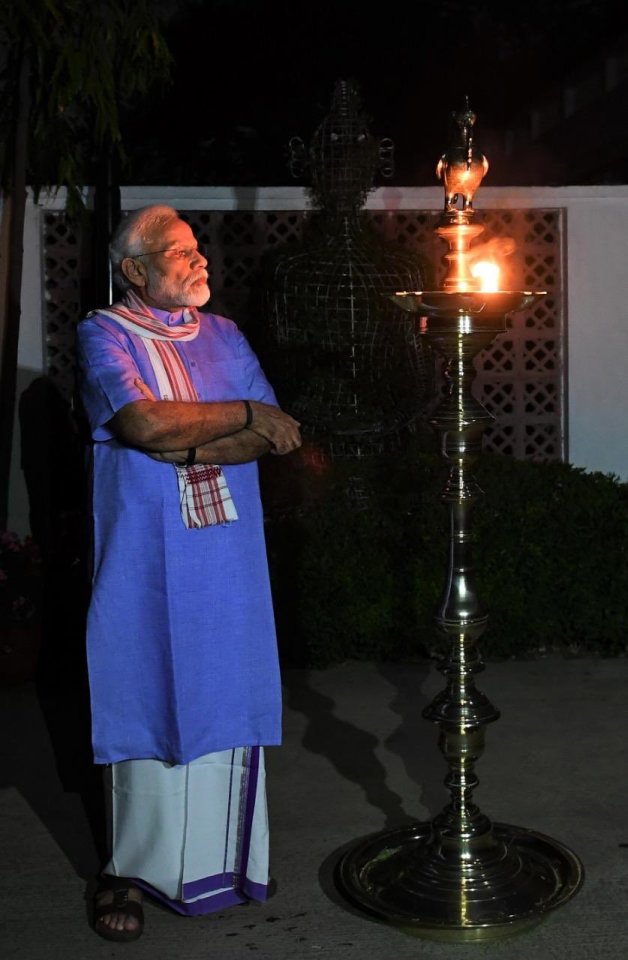
The fight against discriminatory citizenship laws hasn't ended, although those days seem like a distant memory now. This government's prejudice against the so-called 'impure races' has never been more evident. And the economy? Hahahahahaha.
Incompetent governance is not Nazification. UPA-II displayed only incompetence. The Nazification comes from the ruler's explicit alienation and extermination of the 'impure races', while the 'pure races' indulge in it, or worse, look the other way. We have started looking the other way. Any Nazification is incomplete without the complicity of the majority. So when we take part in our prime minister's ridiculous team-building exercises, we make ourselves vulnerable to complicity because any criticism of the Supreme Leader becomes a criticism of ourselves.
Apart from politicians, the Nazification requires a couple of key figures. Arnab Goswami and Sudhir Choudhary do what Joseph Goebbels, head of Reich Ministry of Public "Enlightenment" and Propaganda, was brilliant at. The cops have started resembling the Schutzstaffel and the Gestapo. With a state machinery that is so large, influenceable and united, it is indeed becoming an unstoppable force.

And thus India gets Nazified into an Orwellian state. A couple of us are fighting back, it might not be enough. Hitler's own dissenters could not bring him down. So while Indian democracy looks at a grim future, the least some of us could do is fight back for our own conscience.
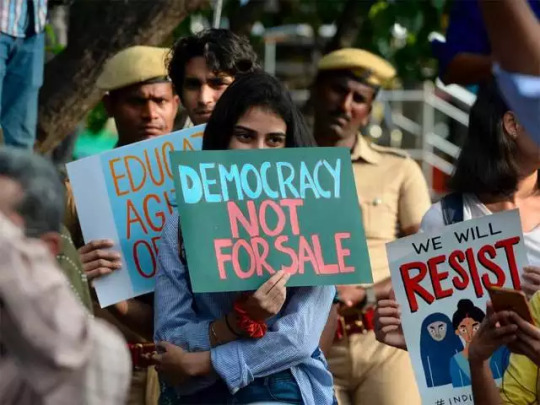
1 note
·
View note
Text
How to Study during a Lockdown
My good friend’s sister, who studies in the same university as I did for my undergraduate studies, posted the following question on our Facebook group.
Uhh, I missed a bunch of deadlines because of everything that's been happening. Now I have a LOT of work, none of which has a deadline. Professors have been nice enough to say "submit it whenever you can" but the problem is doing it at all. I'm overwhelmed by the amount of work that is piling up.
There are massive issues with a lack of resources and work environment, but I don't want to get into that here. Please give tips on how to tackle the ever-growing mountain of work that doesn't have a deadline?
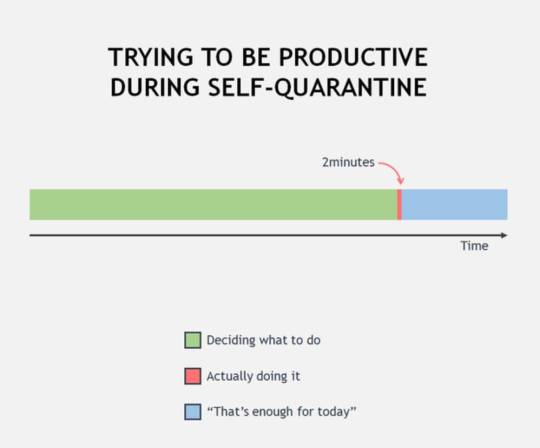
What follows is an unedited, ‘verbatim’ version of my Facebook comment sans Hindi words and the F word, since my family has recently shown significant interest in my blog. The F word has been replaced by “mess” or “messing”. So here goes.
So here's what I do, because having the free time to write this comment is the free time my strategy dictates:
Introduction/Background
I had a study room (my bedroom) which has now been taken over by dad for work (please press F), and in the other bedroom, my sister who just entered her teenage, plays Britney loudly on Alexa and dances her ass off for most of the day. The rest of the house is rampant with noise from all directions - kitchen, dad’s conference calls, phone calls, mum arguing with our domestic help, mum asking me to verify some WhatsApp forward about COVID being spread by flies, and finally mum catching up with some old friends (so sweet). So basically, my 9am - 7pm period is messed up for studying, there is no hope.
The Strategy
I mess around for those eight hours. I read the news and cry, watch films, play poker with Suyash Tiwari, read commie books, write on Tumblr (link in profile), or make some calls myself on behalf of the leftist and anti-national organizations I belong to. BUT, most importantly, I DO NOT STUDY.
When dusk descends upon us, my family starts becoming weaker, because they (except my dear sister) have worked hard all day, while I start to rise, because I haven't worked at all. As they become weaker and weaker, the house starts becoming quieter and quieter. Finally, everybody is half-asleep by 10:30ish, and that is when my work begins. How long do I work? Not much, maybe like 4 - 5 hours. But my work then is super productive due to three circumstantial reasons. 1. Quiet house. 2. The guilt of messing around all day. 3. Three, a certain motivation to study since I already engaged in enough fun for the day.
Conclusion
Obviously, your circumstances are different. But the principle is the same, that is, pick out those hours of the day that you feel are most productive for you. Whatever remains out of your waking hours, do not even think about work, on the contrary, spend it as trashily as possible. I watched mean girls again yesterday for trashiness. No, just kidding, but you get the point. For example, writing such a long comment is so useless to me, but it's what I wanted to do and it's fun introspecting about my day in quarantine and putting it into words. I already feel like studying, but no, the house is still noisy. Good luck!

2 notes
·
View notes
Text
Good Father or Godfather?
Why ‘The Sopranos’ is the best possible shit you could watch this quarantine.
NO SPOILERS.

Okay, so as the picture depicts, The Sopranos is a male-dominated show. It definitely is, there is absolutely no denying that. While there are a few crucial female characters, out of which some are really, REALLY important to the series, the spotlights mostly belong to the men, like Tony, Chris, Paulie or Silvio (from right to left in the above image). It is also set in a time and space where most women are treated as objects and servants. The wives and girlfriends are expected to stay home and cook dinner while the men do the business. They’re expected to look pretty and accompany the men to important events, like the welcome party of a new member of the mob, or a funeral.
But despite carrying such a high level of toxic masculinity, The Sopranos has often been cited as one of the best TV shows of all time, if not the best. I’d like to write about my perspective on why The Sopranos does indeed deserve all the credit.
The Many Lives of Tony Soprano
The title of the blog, “Good Father or Godfather”, is inspired by the two main themes of The Sopranos. The first theme is his mob life. The story begins with Tony Soprano’s (played by the great James Gandolfini) quest for power as the skipper of the DiMeo crime family based in New Jersey. His most immediate rival is his deceased father’s (a former boss himself) brother, Corrado John “Junior” Soprano Jr. Uncle Jun and Tony’s rivalry forms the crux of the first season, as Jun battles old age and Tony’s rising influence. Technically, Tony’s job is that of a solid-waste management consultant, but we can all guess that’s not where his money comes from.

The second theme and some would argue that it is more important than the first theme, is his family. The Sopranos is a brilliant depiction of how a mobster with unlimited money and influence, struggles at the face of familial issues like his marriage, or the upbringing and education of his two kids, and making sure that they develop enough self-sufficiency to not follow their father’s footsteps into the mafia life. The picture below shows Anthony “A.J.” Junior Soprano, Tony, Meadow Soprano and Tony’s wife Carmela Soprano.

The third crucial theme is Tony’s battles with his own demons. This theme is presented through Tony’s therapy sessions with a psychiatrist, who is, in my opinion, the most indispensable character of the show - Dr. Jennifer Melfi - portrayed by Lorraine Bracco (you might remember her from the superhit mafia film Goodfellas). Tony’s relationship with the psychiatrist is arguably the most interesting relationship between any two people throughout the series, as Dr. Melfi herself struggles to come to terms with the fact that she is psychologically helping a man whose food on the table comes from gambling, prostitution, and murder.

The Intensity of the Characters
The only other television show that can match the intensity and diversity of the character line-up of The Sopranos is Game of Thrones. It is hard not to develop a certain attachment to every major character of The Sopranos, and this attachment is not necessarily one of admiration and respect. The amount of contempt I have for Ralph Cifaretto (played by the bald guy from Baby’s Day Out) is unparalleled to my hatred for any other character from any other show (Ramsay Bolton and Dodd Gerhardt come close). The point being, the characters are so beautifully developed throughout the show, that there is not a single dull moment in any episode, simply because of the director’s (David Henry Chase) ability to connect us to every character.

While an analysis of characters, or ranking them, deserve blogs of their own, my point is that the characters are so well made, that we are likely to identify each character with someone we personally know. Silvio and Paulie might be your funny old uncles, while Christopher might be you yourself during some stage of your life. While getting arrested in the finale of season three, Silvio tells the officer that in the previous year he made bail so fast that his soup was still warm when he got home. We’ve all been in Meadow’s shoes at some point in our lives, and Tony, well, he’s a complicated guy. I’m sure you’ll see some part of yourself in the man.
Just the Right Amount of Violence
You might have an apprehension of dismissing The Sopranos as an ordinary action-packed TV show with guns, blood and a lot of kicks and punches. While the show obviously consists of violent scenes, it really does not overkill.

The only drawback might be the sound effects. The punches, to some ears, may not sound as...punches. But I am willing to let that slip because the plot keeps my mind too engaged with questions related to the story of the episode, like why the guy is being beaten up, or why was Tony betrayed, you get what I mean.
Dramatic, but not Overdramatic

Lastly, one of the many reasons why The Sopranos is one of the greatest television shows ever is that it does justice to good old-fashioned TV drama. It maintains its realistic narrative. It does not spice up the plot, because the spice was never necessary for a plot which was already so deep and meaningful. It is very well-paced. It is neither too slow (the description which Breaking Bad haters use for Breaking Bad), nor does one episode cover a massive portion of the plot. The plot is not huge, it is not complicated but it is covered patiently enough, for viewers to immerse themselves in it. It does not depict unnecessary violence, or unnecessary screaming or crying like we see on Indian television. That is why this show keeps its viewers glued to the television. It just seems so real.
James Gandolfini’s performance as Tony Soprano is said to have redefined the world of television. But it would be fair to say that he may not have managed it without a cast that has often been branded as legendary. There are six seasons and eighty-six episodes. If you pace yourself, then your quarantine would fly by. Don’t binge one season a day, there’s no pleasure in that. It’s not that type of a show.
You can thank me later. Trust me on this recommendation.

#coronavirus#the sopranos#quarantine#coronamemes#covid-19#covidquarantine#netflix#amazon#prime video#hotstar
10 notes
·
View notes
Text
COVID -19: Hits and Misses
Why did some countries like China and South Korea curtail the damage, while countries like Italy couldn’t? Why does the richest and most powerful country in the world, the United States of America, seem to be down on its knees in the face of the Coronavirus? Why is the United Kingdom struggling to cope, despite having ample time to prepare, and significant warnings about the severity of the worldwide outbreak?

Remember how, two months ago, we only spoke of three countries - China, Iran and South Korea? But eventually, South Korea seemed to disappear from our daily COVID-19 discourse. We began to shift our focus to Europe, particularly Italy and Spain. As of now, the United States of America tops the list of total COVID-19 cases and the PM of UK, Boris Johnson, has also tested positive for the Coronavirus. All these sensational headlines often make us overlook some success stories, such as that of South Korea, the country which has flattened the curve more successfully than any other hard-hit country.
HIT
South Korea: Testing, Tracing, and Teamwork
South Korea’s cases were on an alarming rise in late February and early March. But by the middle of March, the cases began to grow pretty slowly, as hospitals and doctors were given some breathing space. It is worth noting that Korea’s fatality rate is just above 1 per-cent. So how did they ‘flatten the curve’ so successfully?

For starters, unlike Donald Trump, Moon Jae-in did not treat COVID-19 as a hoax. Nor did he treat it as a conspiracy orchestrated by his political rivals. He took it seriously from the word go. Medical companies joined hands with the government as the former started manufacturing COVID-19 test kits for mass production as soon as cases began to show a sharp spike.
The second key to success was testing. As per The New York Times, South Korea has more people for COVID-19 than any other country in the world, and that too by a pretty massive margin. Mass testing enabled the administration to isolate the infected ones for treatment, making sure that there was little to non-existent unnecessary contact between infected and non-infected people.

Not only did insanely high testing lead to successful isolation, but it also reduced the burden on hospitals and the medical staff, which allowed patients to receive more undivided attention and better treatment. Therefore, it should not come as a surprise that only 139 people, out of 9332 tested ones, have died of the Coronavirus.
Another important contributing factor was a strong sense of civic responsibility among the citizens of South Korea. The people cooperated, didn’t do anything stupid, didn’t panic and worked together with the government. The Korean story was one of teamwork, worthy of a good movie I’d say.
MISS
The USA: Incompetence and Capitalism
On the 8th of March, the number of COVID-19 cases in America was 541. On the 9th, at 16:50, President Trump tweeted the following;
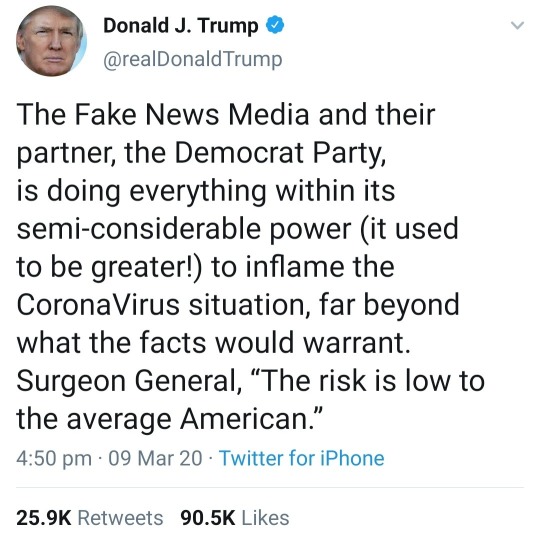
18 days after this tweet, the USA has successfully topped the list of countries with the most number of reported COVID-19 cases (at just over 86,000), crossing China today. That tweet did not age well.
Some would argue, that Trump’s first blunder was caused two years ago when he dissolved a team on the National Security Council (NSC) that was responsible for preparing against exactly the kind of situation it is facing today. The second, and more recent blunder, was his inability to ramp up testing. No testing implied no isolation for people carrying the virus, especially the asymptomatic ones. Why would he ramp up testing, he kept calling it ‘a Democratic hoax’, that is, a ploy by the opposition party to sabotage his re-election campaign. Dismissing health statistics and going against what his own health officials were stating, Trump remained optimistic and chirpy for too long, simply saying that it will “go away.” Well, it didn’t.

Trump only began to take COVID-19 seriously when it started hitting him where it hurts - Wall Street. As if he wanted to show the world that he was not oblivious to the threat, he put the Vice President, Mike Pence, a man who does not really believe in science, in charge of the American response to the pandemic. Since then, cases have spiked up very sharply, hospitals are running out of equipment and the $2 trillion coronavirus stimulus bill that was passed into effect has created serious reservations among some of the smartest politicians in the country, like Alexandria Ocasio Cortez.

One of AOC’s many reservations about the bill is that a lot of immigrant tax-paying workers are being left out of as beneficiaries of the bill. This bill was held up multiple times in the Senate for being “too pro-corporate.” Now that the bill has been modified and passed, all we can do is wait, watch and pray.
America, a capitalist society, has one of the most horrendous healthcare systems in the world. In a society where around thirty million people lack health insurance and millions more are under-insured, COVID-19 has made the American healthcare crisis worse than it already is. As COVID-19 threatens to infect and kill millions of Americans, the same COVID-19 is simultaneously causing millions of Americans to also lose their health coverage at their gravest time of need, because their health insurance is tied to their workplace. In other words, half of the American people, who get their health insurance from their employer, would be losing their income and health insurance as America activates complete lock-down to curtail the spread of the virus. The disaster that looms over the greatest country on earth is catastrophic.
In the upcoming blogs, I shall look at the cases of China, Italy, and the United Kingdom. Until then, keep your hands clean.
1 note
·
View note
Text
An Overview of Pandemics: How a Single Bacterium Killed over 100 Million People
Everybody is familiar with the term COVID-19. But there is another term you must know and remember, and that term is yersinia pestis.

You must have heard of The Black Death? It was also known as The Great Plague, but the term ‘plague’ does not signify an event, it signifies an infectious disease caused by the bacterium yersinia pestis. There are three types of plague. The most common one is the bubonic plague, during which swollen and painful lymph nodes occur in the area closest to where the bacteria entered the skin, and is mainly spread by infected fleas from small animals. The second type of plague is the pneumonic plague which is a severe lung infection caused by the same bacterium. The last and rarest type of plague is the septicemic plague, which is an infection of the blood, most commonly spread by bites from infected fleas.
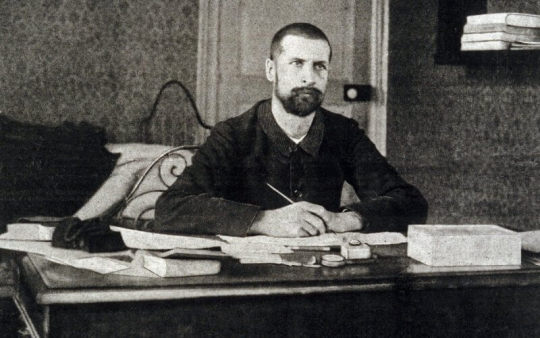
French physician and bacteriologist Alexandre Yersin is credited as the discoverer of the bacillus responsible for The Black Death.The bacterium yersinia pestis infects humans via the Oriental Rat Flea. Where do these fleas get yersinia pestis? They acquire it when they feed on infected rodents. Therefore, when we blame rats for The Black Death, we are undermining or ignoring the key role of transmission (of yersinia pestis from rodents to humans) played by the Oriental Rat Flea. These heartless bloodsuckers were responsible for what came to be later known as the The Three Great Pandemics.
The First Plague Pandemic - The Plague of Justinian
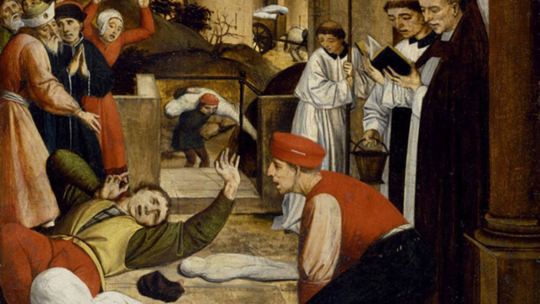
The Plague of Justinian wreaked havoc across the Byzantine (Eastern Roman) Empire and especially its capital, Constantinople from 541–542 AD. It is the first ever recorded plague in human history, and its origins, after the scientific study of the yersinia pestis DNA, have been traced to Central Asia, some arguing that the focal point could be in Qinghai, China. It is said that, during its peak, the plague killed up to 5,000 people per day in Constantinople, and between 30-50 million people (as much as 40% of the population) fell victim to yersinia pestis. Since Constantinople and the port cities surrounding it were the center of all trade via the Eastern Mediterranean Sea, it is argued that merchant ships harbored rats that carried the aforementioned bloodsuckers infected with plague. Historians named the plague after Justinian the Great, the Byzantine emperor at the time, who himself got infected, but luckily survived. Instances of the plague kept recurring until 750 AD, and did not reappear until it resuscitated itself in an even deadlier form during the Second Plague Pandemic. We know it as The Black Death.
The Second Plague Pandemic
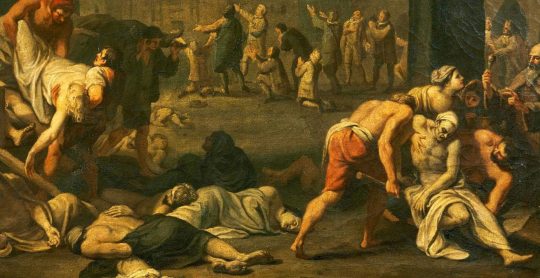
The Second Plague Pandemic is not the Black Death, it is a major series of epidemics of the plague that started with the Black Death. Arab historians Ibn Al-Wardni and Almaqrizi argued that the Black Death’s origins can be traced back to Mongolia, and Chinese records indeed show a huge outbreak in Mongolia in the early 1330s. It eventually reached Europe in 1347. The spread is credited to the arrival of 12 ships from the Black Sea docked at the Sicilian port of Messina. These ships were coming back from the already infected city of Kaffa, which had been infected thanks to Asian trade routes and the attempted siege by infected Mongol armies led by Mongol leader Djanibek Khan.
The Black Death was both bubonic and pneumonic, and had deadly efficiency in slaughtering even healthy people overnight. But The Black Death was only the beginning of the centuries of suffering faced by Europeans as they were hit by plague after plague after plague, most notably, The Great Plague of London.
The most fascinating aspect of The Second Plague Pandemic is how it supposedly ended, the invention of, wait for it, QUARANTINES. The people realized that proximity had something to do with spreading of the infection. Consequently, the uninfected would remain in their homes and only leave when it was necessary, while others eave the more densely populated areas and live in greater isolation. Feels pretty familiar no?
The Third Plague Pandemic

The Third Pandemic Plague was also a bubonic plague pandemic that began in Yunnan, China, in 1855. Can you guess why China was so vulnerable to the chaos that an infectious disease could create at that particular period of time? Two reasons. The opium trade and the internal rebellions (like the Taiping rebellion or the Hui Muslim rebellions) that occurred in the latter half of the nineteenth century. Just like the previous plague pandemics, the plague-infected fleas were the primary vectors between the yellow-breasted rat and human beings.
In 1894, the plague reached Guangzhou, then known as Canton. From Canton, it spread to British Hong Kong, and from British Hong Kong, it spread to Bombay. It eventually went to kill around 10 million Indians in what came to be known as the Bombay Plague Epidemic. The pandemic was finally overpowered by wide-scale vaccination.
Such is the nature of a pandemic. You can slow it down, you can run from it, but you can’t hide. You either contract it, survive and build immunity against it, or the only other solution is vaccination. The vaccination for COVID-19 is expected to be developed in 6-12 months. Till then, hang on.
0 notes
Text
Simple but Humane things YOU could do to Help
As countries around the world enforce total lockdown and curfew in order to fight COVID-19, the privilege of being born in a well-off family has never hit me harder. Having said, there are multiple things we could do, not just as responsible, caring and empathetic citizens, but also as friends, bosses, landlords and of course, sons, daughters, grandchildren and even random strangers.
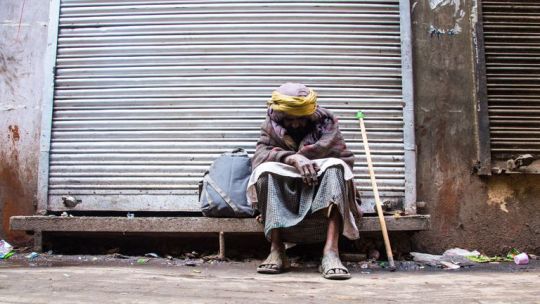
Make sure that your domestic help has PAID leave, any unpaid leave will be criminal. They earn a pittance anyway, do them a favor and give them some extra money if you can afford to.
India is a country of extreme poverty, hunger, and homelessness. Now's not the time for the 'begging perpetuates begging' debate. If you're going to buy milk or eggs, and you see a helpless man or woman on the corner of some road, just hand them a hundred rupee note or something, it'd buy him/her 3-4 meals.
A lot of us, while financially privileged, suffer from significant mental health issues or have toxic familial relations, and the incoming isolation can make it worse. How much Netflix can you watch anyway? Talk to your friends, look out for them and give them some meaningful company. As Umar Khalid said, “Say no to social distancing and yes to physical distancing and social solidarity.”
Don't yell at your parents if they crib too much about your safety, they're scared, understandably. They've got their parents and their kids to think about. I know its hard, with them telling you to wash your hands all the time and asking you to not touch things unnecessarily, but it’s only a matter of one month. We can cut them some slack.
Call out racism and xenophobia. Bigoted WhatsApp forwards with their xenophobic BS has more harmful implications than you think. I cannot emphasize this enough. Asian Americans are being beaten up in America, Manipuri girls are being jeered at by the pathetic species that men are, and there is a sudden sense of rage and hostility towards China. I hate to break it you, but we could have been better prepared. The POTUS called it a hoax for three weeks, don’t rain down on China because it’s an easy target.
Don't spread fake news. If you receive fake news, REPORT it. If you don't know how to, send it to me, I’ll report it on your behalf. Convince your folks of the root of all evil that is WhatsApp. Each and every one of us, without fail, reiterates the two following words - don’t panic. But the very next minute, we forward a Whatsapp message based on blatant lies, misinformation, and rumors. Sensationalism during a pandemic will drive you insane, don’t encourage it.
For god’s sake, don’t hoard necessities, you probably already have decent amounts of rice, wheat, dal, and other essential edibles for the next three days whereas the majority of Indian citizens (daily wage workers) don't even have access to a fraction of what I just mentioned. Let the poor live. If you don’t buy responsibly, poverty will kill them before the Coronavirus gets a chance.
Finally, catch up on some sleep. It’s going to be a long wait, and you haven’t had enough sleep in the past three years.
1 note
·
View note
Text
Shaheen Bagh is an Idea, and Ideas are Bulletproof
Darab Farooqui wrote;
Have you seen streets raise their heads?
Have you seen wounds break into a smile?
Have you seen freedom wrapped in dupattas?
Have you seen an eighty-year-old princess?
The lamp that lights the center of this storm,
The radiant flame is Shaheen Bagh.
If you want to see its insistence, come, see it.
Not the Jama masjid, see this masjid of truth.
Warm your hands with the warmth of their hearts,
Measure the heights of the mountain’s spirits.
Where you will find no stain in the hem,
The name of that cloth is Shaheen Bagh.
Come see Lakshmibai, see Razia Sultan,
See a new India emerge from the hijab,
Tearing the dark, hear the chorus of appeal.
Hear the nation of women, transform, rise
These women sacrificed their homes
Their new dwelling is Shaheen Bagh.

I read a pretty lit headline today morning while scrolling through my favorite newspaper, The Print. It read:
“Shaheen Bagh couldn’t get CAA revoked. But Gandhi’s satyagraha didn’t meet its goal either.”
But we all know that Gandhi’s satyagraha achieved something bigger, and so did Shaheen Bagh.
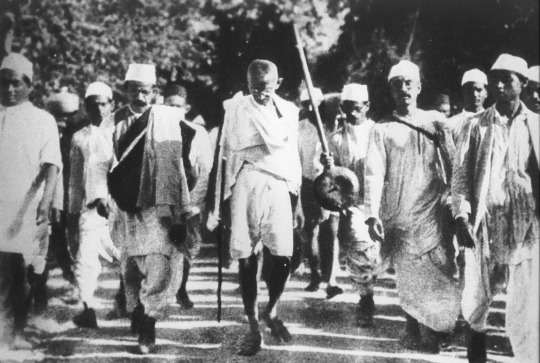
Gandhi’s satyagraha became a tale of unity, defiance and the relentless pursuit of freedom. The rest is history as we know it. Similarly, Shaheen Bagh, a Muslim dominated neighborhood in South Delhi, became the face of India’s rebellion against the discriminatory and dictatorial laws, passed by arguably the most authoritarian establishment India has seen since the Congress government of the 1970s, led by Indira Gandhi. Leading the nationwide fight against the CAA-NRC-NPR legislations, the Shaheen Bagh protest overpowered the communal poison that has slowly been creeping its way into homes, workplaces, even friendships, and familiar relations.

Muslim women led the rebellion. Sikh farmers came from Punjab to aid their “Muslim sisters”. Christians came out in support with their crosses and their Bibles, accusing the government of blatantly discriminating against Indian Muslims. Dalit participation was thriving, led by their charismatic chief, Chandrashekhar Azad, and believe it or not, a lot of Hindus stepped out of their homes to join the revolution that was Shaheen Bagh. Despite my description of the multi-religious protest site, my point is mere this;
Shaheen Bagh has no religion. It only has Indians, out to save their fellow Indians.
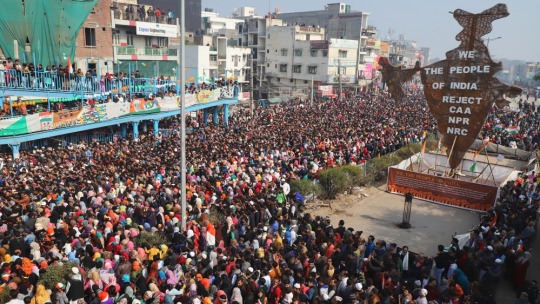
In Hong Kong, initial protests against an anti-extradition bill turned into a large-scale violent rebellion against the puppet regime of China led by Carrie Lam. Similarly, Shaheen Bagh is no longer limited to CAA-NRC-NPR, it is about saving the constitution, and saving the largest democracy of the world. It is about Kashmir. It is about the detentions of Muslims and Dalits across the country. It is about calling out police brutality. It is about saving the idea of India.
The uniqueness of Shaheen Bagh comes from its unity in diversity, and its ability to push the dystopian truth into the minds of those who have some kind of conscience remaining. It is this unity that is intolerable to an establishment that thrives on division, hate, and fear. It cannot risk its people defying its strategy of “keep them stupid, silly”, and Shaheen Bagh, through art, music, books, speeches, and interactions, does exactly that.
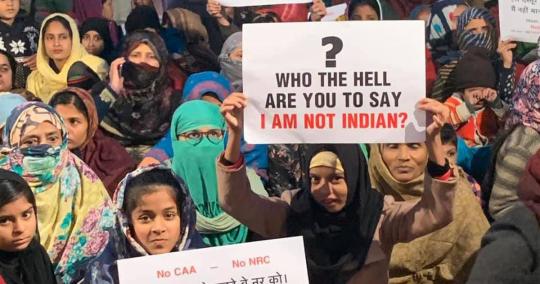
I shall be posting another blog with pictures of the variety of modes of rebellion at Shaheen Bagh, which won both the heart and the mind. One final note. A lot of you will be engaging in some kind of sadistic celebration today. You might even go on to make yourself look like a total psychopath when you tweet, “virus has triumphed over bacteria.” That demonstrates the success of this government in poisoning our minds, in convincing us that dissent is equivalent to treachery by labeling every dissenter with the infamous tag of ‘anti-national’. To you, I quote Tocqueville,
“A nation that asks nothing of government but the maintenance of order is already a slave in the depths of its heart; it is a slave of its well-being, ready for the man who will put it in chains.”
We are anti-establishment, not anti-India. Know the difference.

Made by my friend Akshaj.
1 note
·
View note
Text
In Pictures: Best Memes of the Week
For college Quaranteens only
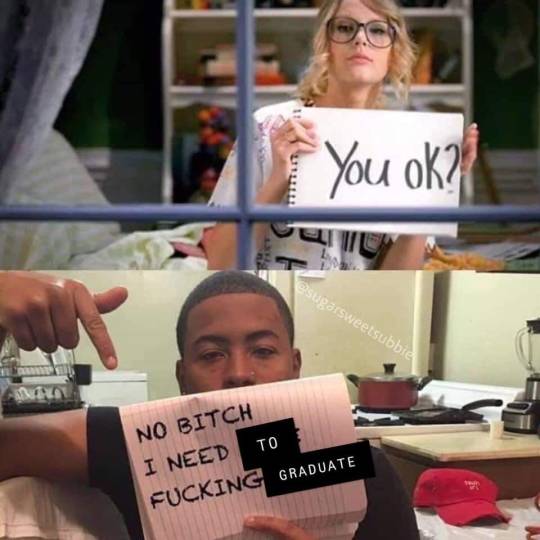
9. 17:00 | 22/03/2020 | India
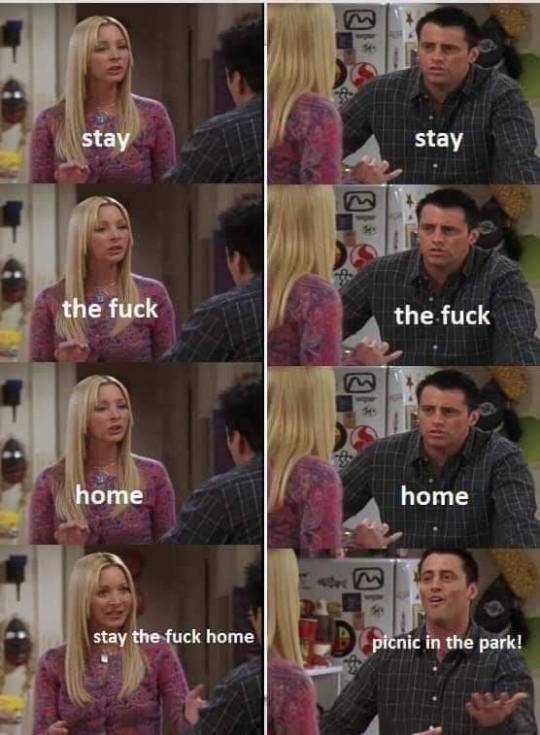
8. Chess in the time of Corona
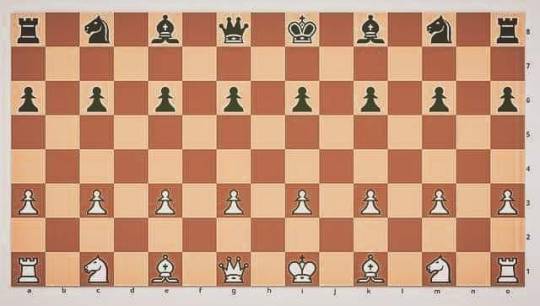
7. .....
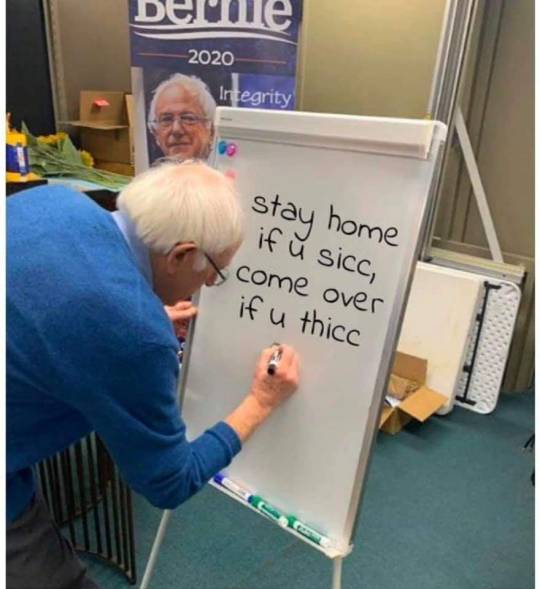
6. Hope is a dangerous thing - Shawshank Redemption

5. Neva eva judge YouTubers

4. Smooth

3. Blunt
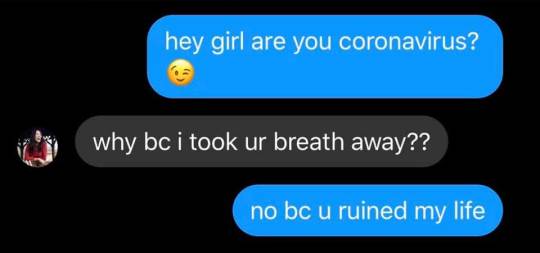
2. Friends never fail

1. Oh you meant BYOB?

0 notes
Text
5 Netflix Films for the Week, set before the 21st c.
How’s quarantine going? Yeah, same here. But it’s Monday after all, and you still have over 150 hours to kill if you’re dealing with this quarantine via a week-by-week approach. I can help you kill around 8%, 12 of those hours. Here are five must-watch films set before the twenty-first century. Don’t watch them all at once, that’s lame.

No spoilers.
5. The Revenant (1823)
Main Cast: Leonardo DiCaprio and Tom Hardy
“Revenge is in the Creator's hands.”
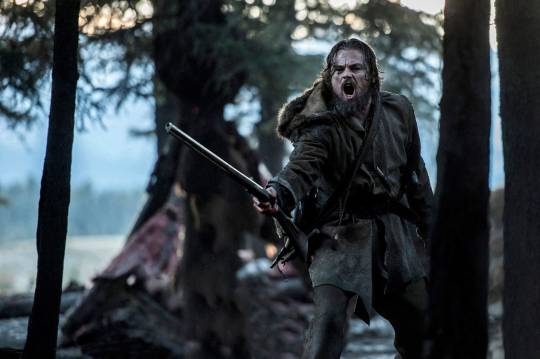
Many of you will know of this film as the one which finally gave LDC his first Oscar, for Best Actor, at the 88th Academy Awards. Unfortunately, you would have stopped at that information and not bothered to watch the film. Released in 2015, the film is based on a novel of the same name. The definition of ‘Revenant’ is “a person who has returned, especially supposedly from the dead.” The story-line does not deviate from the title, as an American frontiersman named Hugh Glass is engulfed in a bear attack and is left for dead by his hunting crew. But he survives. And he’s fucking pissed. The novel is called The Revenant: A Novel of Revenge, and yeah, the film is pretty vengeful too. Interestingly, even though Hugh Glass was indeed a real person, and it is mostly believed that the film and novel are based on a story, there exist no writings from the man himself to verify the description of his story. His story was first published in a Philadelphia literary journal known as The Port Folio. Some say that it is no more than a legendary tale. Nevertheless, a brilliant film, don’t miss out.
4. Before Sunrise (1994)
Only Cast (LOL): Ethan Hawke and Julie Delpy
“If there's any kind of magic in this world…it must be in the attempt of understanding someone.”
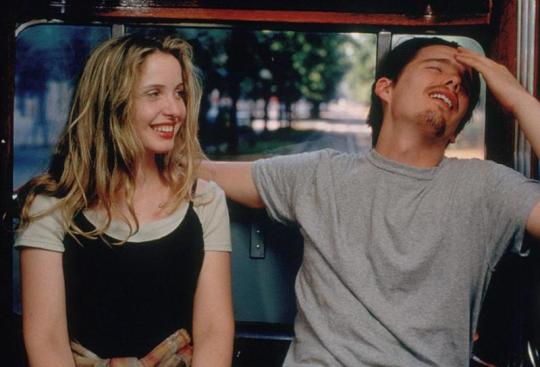
If you’re a fan of love stories/romantic films, and if you haven’t come across the Before Trilogy, I don’t know what kind of love stories you watch. Why is this film unique? In technical terms, it’s minimalist. In simple words, there’s no real plot. There’s no action or drama or horror. These two just walk and talk. Then they talk some more while walking, and when they’ve nothing to talk about, they just walk quietly. So why watch the film? For starters, it’s very peaceful and relaxing, unlike The Revenant, which is fucking intense. Secondly, the conversations in the film constitute some of the best dialogue-exchanges in the history of cinema. Their characters are very carefully crafted, as their varying perspectives on living and loving bring out some deep AF points throughout the film. It is a slow film no doubt, but I promise you that the blandness is worth it, and the ending is too nice. Don’t get bored, give the film some time and thank me later.
3. Django Unchained (1858)
Main Cast: Jamie Foxx, Christoph Waltz, and Leonardo DiCaprio
“Sold! To the man with the exceptional beard and his unexceptional nigga!”
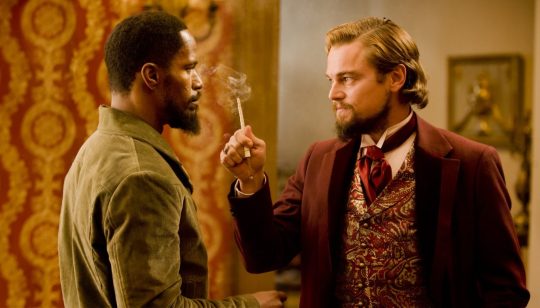
Django Unchained is Tarantino’s highest-grossing film ever, for good reason. Although it has been criticized for historical inaccuracies, violence, and unprecedented high use of the N-word, Tarantino delivered one of the most dramatic and entertaining films from the era of plantation slavery. While the image above portrays Foxx, a slave, and LDC, a rich plantation owner, the highlight of the film was the German dentist-turned-bounty hunter, Dr. King Schultz, played by Christoph Waltz. Waltz’s performance is impeccable, only matched by his portrayal of Standartenführer Hans Landa in Inglourious Basterds (also directed by Tarantino). While the film starts off with Dr. Schultz hunting for his bounties, it eventually goes on to become a rescue mission, where Django and Schultz look for the former’s estranged wife, Broomhilda von Shaft. TW; extreme cursing and racism. But the film is a work of art. In fact, Jamie Foxx has revealed that LDC was pretty uncomfortable on the set, as his character had to use extremely racial slurs. But boy, he pulled off that role brilliantly.
2. Zodiac (1969 - 1980s)
Main Cast: Jake Gyllenhaal, Mark Ruffalo, and Robert Downey Jr.
“I wanna report a double murder. If you go one mile east on Columbus Parkway, to a public park, you'll find kids in a brown car. They were shot with a 9mm Luger. I also killed those kids last year. Goodbye.”
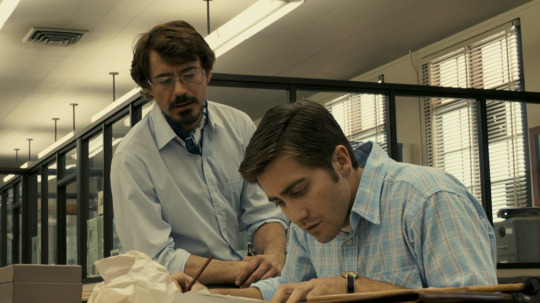
What happens when Iron Man, Hulk and Mysterio gang-up against one of America’s most notorious serial-killers? For now, I can only tell you that it was a pretty uneven contest. Based on a true story, this film depicts the useless San Francisco Police Department’s hunt for the Zodiac Killer, led by Dave Toschi (Ruffalo), and aided by political cartoonist Robert Graysmith (Gyllenhaal) and crime reporter Paul Avery (Downey). In case you’re wondering if they’re fictional characters, they’re not. They became pretty famous while the Zodiac Killer was running havoc, and have multiple articles and Wikipedia pages dedicated to all three of them. The Zodiac Killer remains unidentified by the way, and the cases are still officially open. Why watch the film then? Because the mysteriousness of it will blow your mind. Note that the film is directed by David Fincher, the same guy who directed Seven, Fight Club, Gone Girl and Mindhunter, among many other murder mysteries and thrillers. Don’t be surprised if you spend the rest of the day investigating the case yourself, happens to the best of us.
Consolation Prize: The Irishman (1950s - 1970s)
Main (legendary) Cast: Robert De Niro, Al Pacino, and Joe Pesci
“I work hard for them when I ain't stealing from them.”
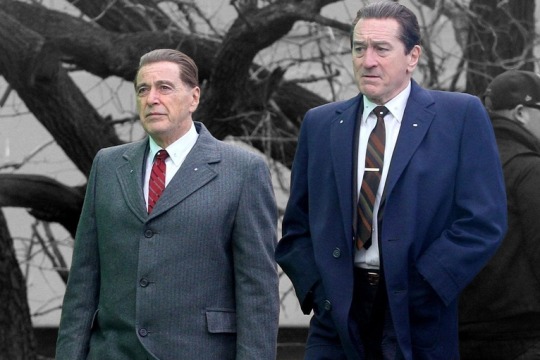
I know what you’re thinking. You’re thinking how can a film with a cast of three actors who redefined cinema in the late twentieth century earn only a consolation prize on this list? The truth is, that such crime/mafia/gangster films, no matter how legendary the cast is, only appeal to a particular audience. A lot of film buffs who truly appreciate cinema and actors are simply not enticed by this genre, which is okay. Nevertheless, this film, which spans over 200 minutes, is one of Martin Scorsese’s best works, along with other mob movies like Goodfellas and The Departed. Based on a true story, it follows the adventures of ordinary truck driver-turned-assassin Frank ‘Irishman’ Sheeran (De Niro), who gets mixed up in some extraordinary business with mobster Russell Bufalino (Pesci), his Pennsylvania crime family and American labor union leader Jimmy Hoffa (Pacino). The punchline of the film is “I heard you paint houses” - a mob code implying: I heard you murder people for money, the paint being the symbol of the blood that splatters when bullets are riddled into the target. Typical Scorsese, mesmerizing direction. The punchline is also the name of the novel the film is based on, in case you love reading about organized crime.
1. Dallas Buyers Club (1985)
Main Cast: Matthew McConaughey, Jennifer Garner and Jared Leto
“Sometimes, I feel I'm fighting for a life that I just ain't got the time to live. I want it all to mean something.”

On the day of the 86th Academy Awards, Facebook and Twitter erupted in outrage. LDC had not been awarded the Oscar for Best Actor for his portrayal of Jordan Belfort in The Wolf of Wall Street, also known as The Film You Must Never Watch With Your Family. I merely asked every hot-tempered schmucks who posted that LDC had been snubbed, “Have you watched Dallas Buyers Club?” Either the answer was no, or the answer never came. The point being, Dallas Buyers Club is one of the best films ever made. Based on the true story of Ron Woodroof, a once homophobic, junkie cowboy diagnosed with AIDS, co-starring Jared Leto (who won best supporting actor) as Rayon, a fictional trans-woman with HIV, this film tells us an extraordinary tale of friendship, hope and empathy. When Ron discovers that the Federal Drug Administration has been systematically banning cheap drugs that can improve the condition of existing HIV-AIDS patients, he opens a ‘buyers club’, that enabled sick people to make drug purchases at lower prices. Things get more interesting with the role of Dr. Eve Saks, an AIDS doctor, who recognizes the villainous role of the state, but wants to remain within the ambit of the law. Ron’s character development might be the highlight of the film, as he transforms from a selfish, homophobic asshole to a dying man waging war against the American government, fighting for the healthcare of the underprivileged. Very few equally magnificent films have come out post Dallas Buyers Club. Don’t miss out.
So that’s it folks. Make good use of your quarantine by immersing yourself in good quality cinema. I’ll come up with some more suggestions on films and TV shows soon enough. Till then, Netflix and Don’t Chill.
6 notes
·
View notes
Text
Fargo: Top 10 Characters
Television shows like Breaking Bad, The Sopranos and The Wire are definitely three of the greatest in the genre of non-fantasy dramas, thrillers, and crime fiction. If you love those three shows, but you are unfamiliar with Fargo, stop whatever you are doing, and watch it now. Right now. Thank me later.

One of the reasons why Fargo is a work of genius is the intensity and depth of its characters. These characters, in my opinion, have earned the right to be categorized alongside Walter White, Tony Soprano, Omar Little and Don Draper, as some of the legendary TV characters of all time. This blog takes a look at eleven of the most astonishing characters Fargo has provided to the world of television.
Beware of spoilers, obviously.
Consolation Prize: Lester Nygaard (Season 1)
“Old Lester, now, he would've just let it slide. But not this guy.”
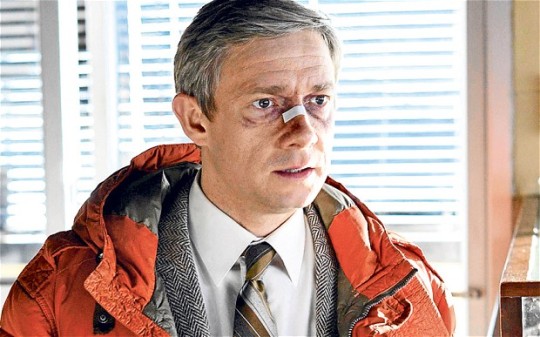
Played by Martin Freeman, or better known as Dr. John Watson from the twenty-first-century version of Sherlock Holmes, Lester Nygaard is a loser. Like all losers, we tend to feel bad for him, until his personality develops in a way which makes us abandon our pity for him. Pity is replaced by disgust, and sadness is replaced by anger. Lester’s transformation from a good-for-nothing non-achiever to a devious and heartless criminal and fugitive is definitely one of the most subtle character developments I’ve seen on TV. His role is often overshadowed by two other characters from the same season. Very important character nonetheless, brilliantly portrayed by Freeman.
10. Wes Wrench/Mr. Wrench (Season 1, Season 3)
“ “

Played by the deaf, yet brilliant actor - Russel Harvard - Mr. Wrench also can’t hear. What can do is kill. He is an assassin, and he is loyal and lethal. He appears in the first season as one-half of the committed team of Mr. Wrench and Mr. Numbers (Grady Numbers). Wrench’s childish attitude is quick to win the hearts of the audience, while his kill skills and will-power earn him a spot on this list. After losing his partner (Mr. Numbers) in a gunfight, he is spared by his partner’s killer because the killer was himself impressed by Wrench’s skills and character. He reappears in season three as an invaluable accomplice to another character on this list, a role which makes us love him even more.
9. Molly Solverson (Season 1)
“Got to love a man who keeps his word, right?“

Played by Allison Tolman, Molly is the walking-definition of a young and hungry-for-justice police officer. A daughter to a police officer and a granddaughter to a sheriff, Molly is the character that makes us nurture the hope that there is hope for goodness and justice. After losing her murdered chief early on in the show, who is replaced by an incompetent one, Molly takes up the challenge of solving her chief’s murder all by herself, and she quickly finds herself trapped in a world of assassins and conspiracies. But despite being shot and hospitalized, she just does not give in, acting as the top cop that she isn’t. The character even earned Tolman the Emmy and Golden Globe nominations.
8. V.M. Varga (Season 3)
“The past is unpredictable.”

Played by David Thewlis, or as we know him - Professor Remus ‘Mooney’ Lupin - from the Harry Potter world, Varga is sick, and in all likelihood he will make you sick to the stomach. Sadistic and ruthless, with a portrait of Joseph Stalin on his desk, Varga uses a businessman hitherto leading a happy and normal life to further his money laundering scheme. Intimidation and disposal seem to be his key tactics to success, apparent when he makes the businessman’s subordinate drink his own urine as a punishment for acting suspiciously. With the worst teeth on the show, and probably suffering from bulimia, Thewlis’ villainous role does not allow us to take even a one minute break between episodes.
7. Floyd Gerhardt (Season 2)
“Three times, I sent men to do a job. Three times, they come back unfinished. I'll handle this myself.”
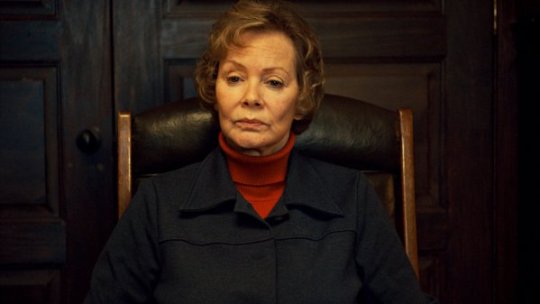
Played by Jean Smart, Floyd Gerhardt inherited one of the most difficult jobs in the world. After her husband Otto, the head of the Gerhardt crime syndicate, suffers a stroke and is unable to lead the mafia any longer, Floyd takes over all the guns and the money. Her eldest boy, Dodd, is unwilling to accept a woman, who is also old, as the new mafia don. However, throughout the season, Floyd shows us who’s boss as she uses an iron hand to deal with a rival gang from Kansas City and to investigate the homicide of her youngest son. One of the characteristics of Floyd which makes us like her so much is her love and concern for her granddaughter, who is mostly abused and humiliated by her father Dodd. The characters in season 2 are the strongest, but without Floyd, none of the other characters would be as appealing as they are.
6. Gloria Burgle (Season 3)
“There’s violence to knowing the world isn't what you thought.”
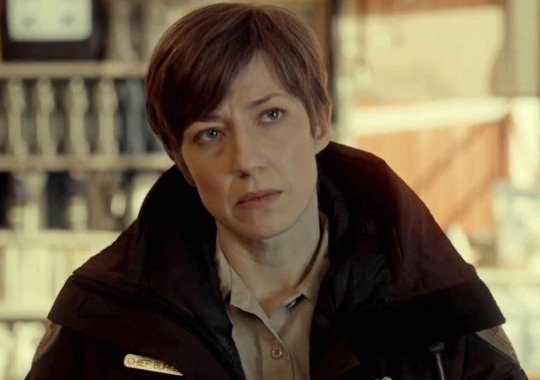
Played by Carrie Coon, Gloria is the older version of Molly Solverson. After finding her stepdad murdered via asphyxiation, Gloria’s investigation leads to bizarre outcomes that find her entwined in something very big and very dangerous. A recently divorced woman, whose position of Chief also got taken away, her new Chief is simply intolerable, who demands of her to let go of the investigation. But like Molly, she just doesn’t give up, and her relentless pursuit constitutes the heart of the third season. Gloria is an example of how some police officers simply cannot be intimidated or corrupted into submission. The final scene of Fargo is a conversation between Varga and Gloria, and arguably, that tense scene is one of the best dialogue exchanges in the series. A true superhero.
5. Lou Solverson (Season 2)
“Am I the only one here who’s clear on the concept of law enforcement?”

A loving father, a caring husband and the hotshot cop of town, Lou Solverson, played by Patrick Wilson, is your Marvel/DC superhero. Lou actually made his first appearance in the first season, as Molly’s father - former cop currently running a diner. In the second season, we are given a glimpse of Lou’s glory days as he single-handedly takes on both the Gerhardt Family and the Kansas City Mafia. Two things to note about Lou’s character - fearlessness and morality. Lou just does not submit to intimidation, as is seen in his confrontations with Mike Milligan on one occasion and with the Gerhardt Family on another. On the latter aspect, Lou is forced to take in his long-time friend Ed Blumquist on charges of murder, but the element of friendship does not deter Lou to do what he knows is his duty and is morally right.
4. Mike Milligan (Season 2)
“If the goal is to kill those who oppress you, what does it matter who goes first?”
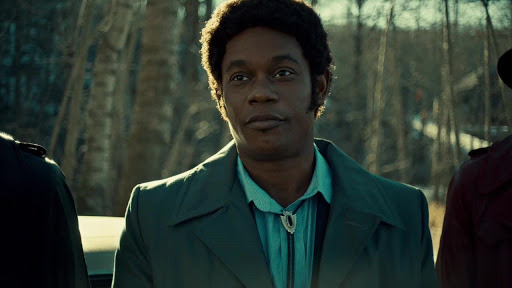
Played by Bokeem Woodbine, Mike Milligan is the epitome of suave. A well-read man, who often uses poetic quotes out of nowhere to dramatize his point, Mike is an assassin working for the Kansas City Mafia, and is in charge of ripping the Gerhardt Family apart. Arguably the most cunning and nefarious character of the second season, what sets Mike apart from other villains is the unbelievable aura of calm he brings to a seemingly tense situation. Varga does that too, but Mike does it better. Intelligence is his most lethal weapon, as his loyal henchmen, known as The Kitchen Brothers, carry out most of the bloodshed for him. At the end, although Mike meets a fate worse than death, most of us would die to be him during a gang-war.
3. Lorne Malvo (Season 1)
“There are no saints in the animal kingdom. Only breakfast and dinner.”

Played by the former husband of Angelina Jolie, Billy Bob Thornton’s portrayal of Lorne Malvo goes down as the greatest villainous role in Fargo. Malvo, in simple words, is pure evil. He does not care. He is a predator, with an ideology best put as, “kill or be killed”. He begins an unusual friendship with the Lester Nygaard, whose character is antithetical to that of Malvo. He even saves Lester from arrest and gradually, through his venomous words, turns him from an innocent loser into a evil loser. Eventually, Lester tries to show him who’s boss, realizing he couldn’t have made a worse choice about who to fuck around with. The personification of evil that is Malvo, can be categorized with characters such an Anton Chigurh, the Joker and Hans Gruber (who has an unusual physical resemblance with Malvo) on the list of the greatest villains of all time.
2. Ohanzee “Hanzee” Dent (Season 2)
“ “Send the Indian,” they'd say. “Who cares about booby traps? Give Hanzee a flashlight and a knife and send him down into the black echo.” ”

Played by Zahn McClarnon, Hanzee Dent is not an evil guy. He is a bad man, sure. But he is not EVIL. He is not a villain. Society alienated him, treated him like a mongrel and made him a ticking time-bomb only seconds away from the boom. A native-american assassin recruited by Otto Gerhardt from a very young age, Hanzee appears to be a loyal hit-man for the Gerhardt Family, until he loses his shit. An unstoppable force and a ruthless killer with a history of military service (Vietnam), Hanzee has an agenda of his own. His killing spree is triggered by a sign outside a pub boasting about murders of 22 Sioux Indians who were hung there, with a puddle of dried vomit beneath it. Arguably the most complicated character of the show, with an intense development of personality, Hanzee Dent is the only character in the show who is a lethal assassin but makes us pity him and root for him.
One Last Consolation Prize: Peggy Blumquist (Season 2)
“I just wanted to be someone.”

Played by Kirsten Dunst, or Mary Jane from the Tobey Maguire Spiderman series, Peggy Blumquist is the source of all the drama. After she accidentally runs over the youngest Gerhardt son, Rye Gerhardt, her husband, Ed Blumquist (another brilliant character) becomes number one on the Gerhardt Family’s blacklist, and acquires the nickname - The Butcher of Luverne. Peggy should not be perceived as stupid or a trouble-maker. Throughout the show, she feels what many of us also feel, that we are not living up to our potential. Her interests conflict with her husband’s interests, but eventually she does everything in her capacity to clean up the mess that she (unintentionally) created, and to save her husband from the cops and the mafia. Her portrayal by Dunst was vastly appreciated by critics and fans alike, but in a show comprising of so many awesome characters, it was impossible for me to include Peggy in my top ten.
1. Nikki Swango (Season 3)
“You've made me the happiest woman ever. Now, let's make a sex tape.”

In Fargo, we have super-heroes, heroes, villains and super-villains, and we have Nikki Swango, portrayed by Mary Elizabeth Winstead. Right from the moment we saw her eliminate a threat to her grand plan with the help an air-conditioner, Nikki provided Fargo with the most unique ‘unique character’. A genius who utilizes her intellect in a professional game of cards (Bridge), she may be, at first, perceived as selfish and shallow. But towards the end, it is evident that she actually did love her fiance Ray Stussy, and wasn’t just using him for her personal ambitions. It is hard to put a hero/villain label on her because she embodies the key characteristics of both roles - empathy, willpower, deviousness, ruthlessness and a thick skin. Her partnership with Mr. Wrench, her plan to execute the entire squad led by Varga AND extort two million dollars from him has to be one of the most memorable moments of the series. Not to forget how she, along with Wrench, hijacked the truck carrying all the documents needed by the IRS to prosecute Varga. Simply put, Nikki Swango is the badass of the show.
So that’s my list. I won’t ask you to like or comment on my blog (some feedback would be appreciated though). All I want from the world of Netflix, is that this TV show receives the viewership and appreciation that it deserves, which it hasn’t gotten yet.
20 notes
·
View notes